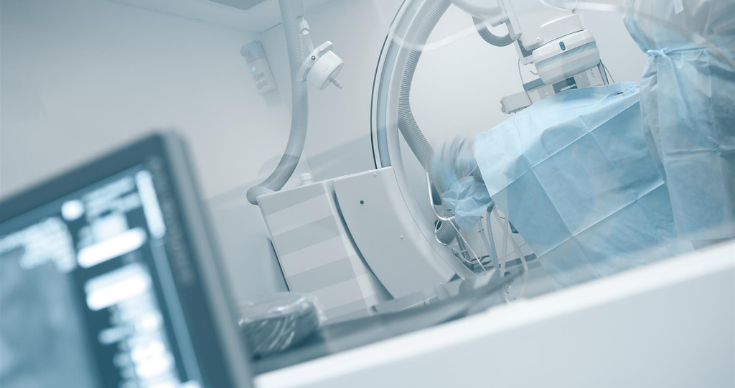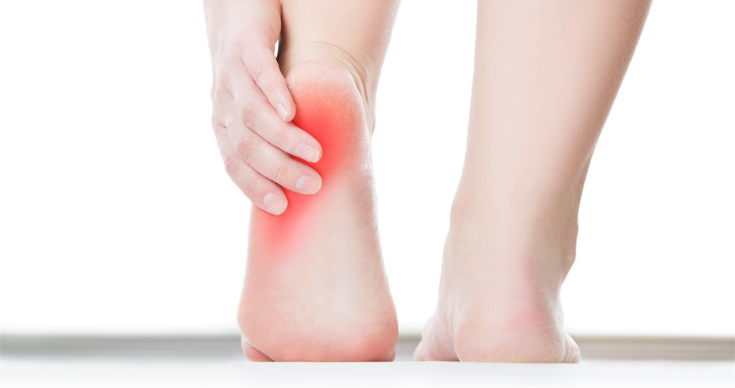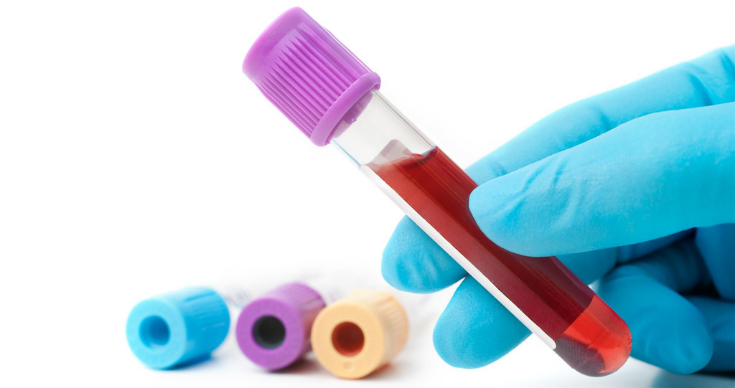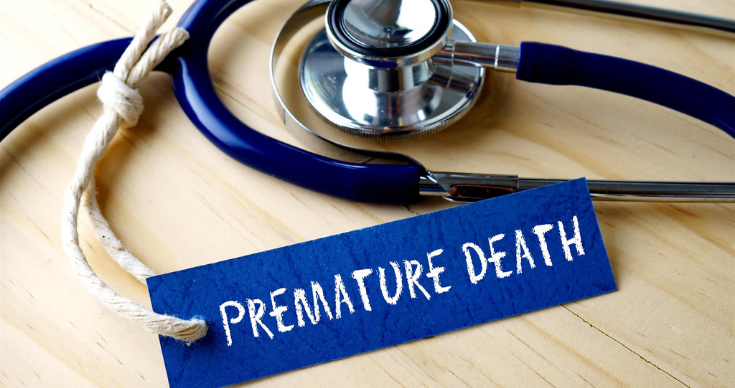All You Need To Know About Stroke
A medical emergency can happen any day, any time, with or without any warning signs. The most common medical emergencies in Kolkata are a heart attack, stroke, cardiac arrest and road accidents. Often people assume heart attack and stroke to be the same thing, but they are not. Let’s understand some crucial aspects of stroke in brief.
What Is a Stroke?
Stroke is a medical emergency which occurs when blood flow to the brain stops and as a result, the brain cells begin to die. A heart attack is a similar medical emergency in which the supply of blood to the heart stops.
There are 3 kinds of stroke, namely
- Ischemic Stroke – When an artery is blocked
- Hemorrhagic Stroke – When a blood vessel is ruptured
- Mini Stroke (Transient Ischemic Attack) – When a blood vessel is damaged temporarily
Though a mini-stroke doesn’t have any long term effect on health for most people, some patients are left with some disability for life. A mini-stroke also uplifts the risks of having a stroke in the future, significantly.
What Are The Symptoms Of A Stroke?
As already mentioned, stroke is a medical emergency and during stroke every second count. Thus it is crucial to be able to identify stroke on time. But identifying stroke can be challenging for people in general. In this regard, we all should be aware of a simple acronym FAST. So, if you suspect anyone to have a stroke, check the following.
- Face Dropping – Ask them to smile to check the facial muscles. If you observe one side of the face to be dropping or if the smile appears to be uneven, it might indicate a stroke.
- Arm Weakness – Ask them to lift both arms and see if they can. Also, check if they complain of numbness in one arm.
- Speech Difficulty – Ask them to check how they respond and see if their speech seems slur or abnormal or if they are able to understand your command.
- Time To Call Ambulance – If any of the above-mentioned symptoms are present, don’t hesitate and call the ambulance immediately.
Apart from these obvious symptoms of a stroke, there are few other minor symptoms as well. These include-
- Severe, sudden headaches
- Blurry vision or difficulty focusing on one/both eyes
- Paralysis/numbness/weakness in body part/s
- Trouble walking or loss of balance
- Dizziness or confusion
- Loss of memory
- Muscle stiffness
- Involuntary eye movement
So, always remember, ‘if you suspect a stroke, then be FAST’. If you are not entirely sure, get it addressed at the nearby healthcare provider. Treatment on the right time will reduce the risk of disability or even death.
The symptoms of stroke may vary depending upon severity. On one hand mild stroke might have a temporary weakness; on the other hand, any sever stroke can end up causing permanent paralysis.
ILS Hospitals is all set to offer accurate diagnostics and prompt treatment for stroke and other medical emergencies. Our expert doctor and paramedic team monitor the patient round the clock, on our ICUs. For more information, visit us.
A Brief Introduction To Cardiac Catheterization
The heart is a wonderful organ that performs the crucial function of pumping blood into the body. Sometimes it happens that the functions of the heart get affected due to some illness or defect. Then it requires extensive treatment and accurate diagnosis, which plays an important role in keeping it healthy. Thus, today, we will discuss one particular diagnostic procedure, the cardiac catheterization.
What Is Cardiac Catheterization?
Cardiac catheterization is a diagnostic procedure that is available in many good heart hospitals, to evaluate the working condition of the heart. It can also evaluate the condition of the heart muscle, valves and the coronary arteries along with the pressure and oxygen level of the blood within the arteries. It can also locate the regions where the arteries get narrowed and can also detect birth defects in the heart if any. Moreover, it can collect some tissues from the heart, as a sample for biopsy.
The procedure is carried out in a cardiac catheterization lab or more commonly known as the cath lab. It helps the doctors identify the problems that are present within the heart or its arteries. It also can be used to unclog the blocked arteries.
Medical Procedures That Can Be Done During Cardiac Catheterization?
Several medical procedures can be carried out simultaneously by a cardiologist, during a session of cardiac catheterization. These include a range of procedure to fix a blockage in the heart such as coronary angioplasty, coronary stenting, balloon angioplasty. It is also used to fix any holes present in the heart structure along with repairing /replacing any valve. Procedures like ablation to treat arrhythmia can also be carried out with it.
How Is It Carried Out?
This is a non -invasive diagnostic technique, even though we have mentioned the catheters is pushed through the blood vessel. It is said so because the incisions are not made on or near the heart muscle. A thin, hollow cannula, known as the catheter is inserted through either an artery or vein. Usually, the site for this is the groin, arm or neck. It is then inserted further to reach the heart. This movement is tracked through the x-ray machine that is simultaneously used during cardiac catheterization.
Once the procedure is finished, the catheter and their equipment are retracted back and the incision is stitched closed.
Usually, the procedure is done while the patient is still awake, but they are given some sedatives to help them manage the pain. However, for procedures like valve repairs, and ablation, general anesthesia is administrated. The procedure mostly does not have any complications. Moreover, the recovery is quite fast and thus the patients can return to their home the same day. But, they might be kept under observation for a couple of more days, if the doctors find it necessary. Moreover, there is rarely any chance of developing any long term complication from it.
ILS Hospitals Dum Dum offers advance cath lab services. In case you have been referred to have cardiac catheterization, come straight to ILS Hospitals, one of the best heart hospitals in Kolkata, and get the best treatment from there, by the expert cardiologists.
Why Women Are More Prone To Osteoporosis
There are many factors that make an individual susceptible to any particular disease. Often such factors can be smoking, drinking alcohol, aging, having some underlying illness and so on. As per many orthopedic experts, women are more susceptible than men, when it comes to osteoporosis. Let’s find out the reasons why women are more likely to have osteoporosis than men.
Osteoporosis is an orthopedic condition in which the bone becomes porous. As a result, eventually, it leads towards making them weak and brittle. It can easily lead to a fracture even due minor to mild trauma or accident.
There are mainly 2 reasons for women being more susceptible to have osteoporosis.
Bone Structure
Osteoporosis often happens due to certain factors that are prominent during childhood and adolescence. Women reach their peak of bone mass growth around age 18, for men it continues to grow around the age of 20. Moreover, women have smaller bone structure as compared to men, as a result, their bone mass density is lower than that of men. These factors make women more susceptible to have orthopedic conditions.
Role Of Estrogen
The female hormone, estrogen is the main reason for the likelihood of osteoporosis in women. Estrogen keeps the fertility cycles in check. Simultaneously, it also keeps the bones healthy and strong and things work well until the time of menopause. After menopause, the hormonal level drops significantly and act as a big factor to cause low bone density.
The reason being, women keep on losing bone density after menopause. In fact, as per gynecologists, women who have menopause at a younger age are at even more risk of the same. In contrast, women having their cycles at an earlier age or the ones using contraceptive (with estrogen) often have healthier bone mass.
Moreover, having irregular periods or start having them at a much later age are also some reasons for lower bone mass than others. Apart from these, having the ovaries removed can also cause lower bone mass.
Thus it can be concluded that women are at higher risk of developing osteoporosis and often other orthopedic conditions as well. As per studies, it has been found that one out of every 2 women above the age of 50 is likely to have osteoporosis. However, that does not mean, nothing can be done to address it. Regular exercise, intaking adequate vitamin D and calcium are highly beneficial to ensure a strong bone build-up. Osteoporosis is a disease that requires timely treatment to make sure it does not result in any severe complication.
At ILS Hospitals, we offer excellent orthopedic treatment and care for people who are enduring pain and discomfort for years. It’s time to address them effectively and lead a much healthier life ahead.
Common Gynecological Problems Faced by Women of Different Age Groups
Aging is a natural progression for both men and women and it helps them acquire new experience and expertise. However, it also brings new challenges to health-wise. Today, we are going to discuss what gynecological problems women go through, at different phases of life.
Gynecological Problems During Adolescence
1. Delayed Puberty
There is no fixed to start having periods, but if it does not starts by the age of 11, it is best to seek a doctor. Though many young girls start having a period at the age of 14 or so, lack of periods can also happen due to the absence of uterus, by birth. An expert gynecologist can verify the same and advice accordingly.
2. Menstrual Disorder
There can be several types of issues with the menstrual cycle. Heavy periods, scanty periods and irregular periods are most common. Mostly it can be addressed well with a healthy diet, active lifestyle and taking adequate rest in between. However, it is still best to keep track of it and seek consultation from a gynecologist.
3. White Discharge
Though white discharge is very common among women of childbearing age, it can be a bit heavy and troublesome for young girls. Maintaining proper hygiene is required, along with doctor’s advice, if needed.
4. Abnormal Facial Hair
During a young age, many young girls develop facial hair due to hormonal disbalance, which can be devastating for her self-image. Often it gets better with age, but still, it is wise to seek an expert opinion, cause many a time, it does require treatment to fix it.
Gynecological Problems During Adult Age
1. Infertility
The inability to have a successful natural conception or to carry a pregnancy is termed as infertility. Often it is due to some lifestyle factor such as smoking, overweight which can be resolved. However, infertility often occurs due to some more severe hormonal or gynecological conditions, which requires extensive fertility treatment from expert doctors.
2. PCOS
Polycystic Ovary Syndrome (PCOS) is one of the most common hormonal issues among women of childbearing age. It becomes more prominent and problematic during this phase. It starts to interfere with everyday life and other gynecological aspects of the body. Thankfully, it can be treated effectively with medication, lifestyle change, and surgery, if required.
Read more: 5 Facts About PCOS Every Women Should Be Aware Of
Gynecological Problems During Later Age
1. Menopause
It is the natural decline and eventually cessation of reproductive life. Though it is inevitable for every woman, it brings a hard time for many women, either physically, or emotionally, or both. It can be easily treated and thus, women should consider it if they feel they need help.
2. Gynecological Cancer
Gynecological cancers are yet another problem among older age grouped women. Cancer of Breasts & Uterus is more commonly diagnosed in older women as compared to the younger groups. Often it is due to aging and sadly, many a time, it is because of ignoring symptoms of the same for years. Either way, it should be treated form an expert gynecologist or oncologist at the earliest.
All the women are advised to keep track of their health routine, especially after attaining puberty. Availing well-women health check-up package once every 2-3 years is an excellent way of ensuring the same. Seek medical help if any alarming symptoms appear. Stay healthy, and always remember-
“There is a pain in being a woman, yes, but there is pride in it, too”.
-Mary Pauline Lowry
Most Common Diabetic Foot Conditions You All Need To Know About
Diabetes is one of the most widespread diseases in today’s world. Diabetes clinics, all around the world are addressing hundreds of new diabetes patients each year and the number is rising at an alarming rate. Needless to say, having a timely diabetes treatment is quite crucial, as many of you must be aware that untreated (or poorly managed) diabetes can lead to many complications like damage to eyes, kidneys, skin, nerves along with causing cardiovascular conditions and hindrance in the natural healing process. Today, we are going to discuss one particular condition, the diabetic foot.
Diabetic foot is an umbrella term for the foot conditions that arise due to prolonged diabetes. Let’s list out some of the most common conditions related to the foot that is caused by diabetes.
Diabetic Neuropathy
This causes numbness and loss of sensation in the feet, particularly in the extremities. Eventually, it leads to nerve damage and makes the person unaware of having wounds, infections, irritation, blisters or sore in their feet. Often it happens, that people become unaware of the facts that they are wearing tight shoes or if the shoes are rubbing.
It left unaddressed for long, it leads towards having gangrene and ends up needing an amputation.
Peripheral Vascular Disease
Prolonged diabetes affects the structure and function of the blood vessels. In peripheral vascular disease, the fat starts to get decomposed on the blood vessels reaching hands and feet. As a result, the adequate blood supply to the feet gets hampered and results in pain and infections. If left unresolved, it too can lead to foot amputation in the future.
Athlete’s Foot
It is a fungal infection that leads to cracking of foot skin while making it red and itchy as well. If left untreated, germs can enter through the crack skin and spread infection. Thankfully, it can be easily treated with topical creams and oral medicines.
Foot Calluses
It is the hard skin build upon the underside of the foot. It often occurs due to uneven bodyweight distribution, poorly fitted footwear, prolonged diabetes or some underlying skin condition. Wearing footwear with padding and using a pumice stone to remove calluses regularly is a big help. However, one can consider taking medicine to address it effectively as well.
Foot Corn
It is a hard skin build-up either between toes or on a bony area of the underfoot. It may also happen due to uneven pressure distribution on the foot. It happens mostly on dry skin, due to friction between toes or because of the shoe. Using any sharp object to remove them forcefully is highly unadvised. Instead, proper medication is more useful for the same.
Diabetic Foot Ulcers
Diabetes makes the healing process quite slow, and any cut or injury in the foot can often lead to infection. Diabetic foot ulcers are the condition in which the skin breaks deep on the underfoot. It eventually scrapes out the flesh and if left untreated for long, it keeps on causing damage heavily to the foot.
In case you are suffering from diabetes for a long period and encountering some foot condition, get in touch with our expert diabetic foot specialist to get quality treatment and care.
Watch Out For These Monsoon-Related Health Issues And Few Precautions
The rain is pouring all around us. Sometimes, it is drizzling while sometimes it is raining hard. Though monsoon beings many joys, it also brings many health hazards. Many gastroenterology clinics note a rise in digestive illness around this time. It is not uncommon for people to have more sick leaves during this period of time. In fact, a sharp increase in patients can be seen in every best hospital during monsoon. Today, we will list out the most common monsoon-related health conditions and will offer some precautions to stay healthy during this season as well.
The best hospitals in Kolkata keeps on having a long queue of patients, all year round, but the following conditions are noted mostly during monsoon.
- Water-Borne Disease – The contamination of water with several pathogens leads to many bowel-related diseases namely, loose motion, diarrhea, cholera.
- Contaminated Food Related diseases – Due to the environment and hygienic factors, several diseases onset during monsoon, namely, stomach infections, vomiting, jaundice and so on.
- Mosquito-Borne Diseases – Since breeding of mosquito uplifts during monsoon season, several diseases like dengue, Chikungunya, Malaria, etc occur in large numbers.
- Common Monsoon Related Diseases – The season change of monsoon brings many other health conditions as well, such as common flu, fever, cold and cough. But thankfully, most of them can be easily treated with mild medication and taking adequate rest.
This season brings many health hazards but timely precaution can help you mitigate the risks of the same and enjoy the season.
1. Intake Plenty Of Vitamin C
Nature offers us many wonders in forms of fruits and vegetables that help us stay healthy. So, increase your intake of vitamin C during monsoon. It can be easily ensured by including citrus fruits in your diet, such as lemon, grapefruit, oranges and fresh green veggies; in fact, sprouts are a good option too.
2. Don’t Let Water Be Stagnant
As already mentioned before, lots of diseases occur due to mosquito during this season and stagnant water is highly favorable for them to breed on. So, make sure all the water storage tanks and reservoirs in your locality is carefully closed with lids and also make sure to get rid of any discarded objects that can store rainwater in it.
3. Avoid Street Food
No matter how mouthwatering you find street food to be, avoid it as much as you can, especially during monsoon. Avoid cut fruits, deep-fried things and items like panipuri in particular. It stays exposed out in the open and as a result, is highly likely to cause some or the other disease.
4. Disinfectant Yourself And Your Surrounding
During the monsoon, the germs spread rapidly. Thus, wash your hand before eating, add few drops of antiseptic or disinfectant in your bathing water daily. And also remember to wash your clothes and bedsheets with it too. You can spray some disinfectant near your home and garden as well.
5. Stay Covered Properly
Since the number of mosquitoes and other pathogens are more during monsoon, it is crucial to limit your exposure to them. Wear full sleeve clothes and pants to protect your skin against them. Also, try to use the mosquito net at night or have net installed at windows.
So, adopt these healthy habits to stay disease-free on this monsoon. However, if you come across any medical issues that persist for more than 5-7 days, get in touch with physicians for treatment and rule out the possibility of any health hazard.
The Latest Laparoscopic Surgery Is A Better Option Than Open Surgery In Many Cases
We live in an era of medical science when it is constantly improvising to enhance our lives. On one hand traditional, open surgery has been a very useful treatment approach to treat a range of illness for centuries, however, laparoscopic surgery is substituting many open surgery procedures at a fast pace. Today, we will discuss laparoscopic surgery and list out why it is a more beneficial option these days.
Laparoscopic surgery is also known as minimally invasive surgery, or keyhole surgery or band-aid surgery. It is carried out by making a few minute holes on the abdominal area rather than making a large slit like it is done in open surgery. The procedure starts by inflating the stomach using some carbon dioxide gas. This offers two advantages- it helps the surgeons have visuals and working space to carry out the operation. The surgeons insert several instruments through these holes, including a laparoscope, camera, light, and other equipment.
The camera captures the visuals from inside the body and projects it on the screen. The doctor uses this visual to guide the instruments inside the body and performs the surgery. After it is done, the instruments are retracted back and the abdominal cavity is deflated by extracting the gas out. The minute incisions are stitched back and thereby completes the surgery procedure.
There are many advantages associated with laparoscopic surgery.
- It mitigates the need for a prolonged hospital stay as it often involves fewer complications. The patients are generally allowed to return to their home within 2-3 days of the surgery.
- It reduces surgery risks such as bleeding, infection, nearby organ perforation, etc due to the much smaller incisions.
- As it involves no large stitches, usually the chances of forming hernia in the future are less (which is otherwise is a high-risk factor associated with open surgery).
- It is aesthetically better. Laparoscopic Surgery leaves only 2-3 minute incision marks, which looks a lot better than having large stitch marks.
- The minute incisions ensure minimal bleeding and hence, blood transfusion is often not required during these surgical procedures. For the same reason, it is also known as a bloodless procedure.
- This surgery technique does not lead to the organ’s exposure during the procedure. As a result, it mitigates the risk of infection during and after surgery.
- Due to all these above-mentioned factors, laparoscopic surgery offers much faster recovery. It enables the patient to resume their daily life within a few weeks time period. This results in much lesser absence from work and personal life.
At ILS Hospitals, we offer a wide range of medical surgery through the laparoscopic technique. Our eminent surgeon offers minimally invasive surgery for various medical specializations. We are all thrived to ensure that the patients gain the maximum benefit out of the procedure.
4 Health Issues Faced By Working People
Success is no accident. It is hard work, perseverance, learning, studying, sacrifice and most of all, love of what you are doing or learning to do. – Pele
Indeed work is an inseparable part of our lives. Not only it pays the bills, but also keeps us engaged in everyday life, enhance our skills and knowledge and help us bond with people around us. However, there are few downfalls of the same as well, as these are often associated with occupational hazards. Many such cases get registered each year at various orthopedic clinic in Kolkata.
Today, let’s list out some of the health complications that are closely associated with working people. Many individuals are involved in work that requires spending most or all of the time on the desk. Most common problems associated with the same are as follows-
1. Back Problems

This is certainly the most common condition faced by people chained to the desk. Long hours of sitting, especially without taking adequate breaks to lead to several problems related to the spine, neck, and back. This becomes even worse as most of the people actually sit on chairs that are either poorly designed for back support or have worn out features due to prolonged usage.
Taking frequent breaks from work, doing light stretching and yoga can help deal with it.
2. Eye Strain

We live in the era of the digital world, so most of our work is being carried out with the help of the computer. Prolonged work on it can lead to straining of eyes along with risks of developing many other vision problems, in a long run, such as dry eyes, hazy visions, change in power, redness in the eye and many others. Taking regular breaks from the screen is quite important along with staying hydrated to deal with such vision problems. If problems persist, it is wise to seek treatment without any delay.
3. Stress

Stress is a major health threat for people working for long. This happens due to long duty hours, work-related pressure, conflicts at the workplace and at home. It is very crucial to be able to manage stress because if it is left untreated, it can bring many other complications both medically and emotionally. In fact, having anxiety and depression is almost inevitable if you are dealing with stress persistently. As per physiatrists, having a support group, indulging into hobbies and yoga can help immensely.
4. Overweight/ Obesity

Most office workers are chained to their desks for a significant part of the day. Even during non-working hours, people do not stay very motivated to make efforts to stay fit. Moreover, consuming highly processed food while working is something quite common among such people. As a result, it is very common to find them gaining weight more than ideal for them. Staying physically active will help them stay away from excessive weight gain.
How many of them are you dealing with? Come at ILS Hospitals and get yourself evaluated for the same. Early treatment will help you lead a healthier life ahead.
Blood-Related Diseases – Types And Treatment At a Glance
No matter how healthily we thrive to lead our life, falling sick is an inevitable part of life. There are various kinds of illnesses out there, affecting certain organs, organ system, muscle or bones. Today, we are going to discuss blood-related diseases, its types, diagnosis, and treatment. Let’s understand these aspects, one by one.
Blood-related diseases come under a specialty called the hematology. The scope of hematology is enormous and there is a wide range of condition affecting some or the other component of blood. Most of them occur due to a certain mutation in the blood, while many others onset due to certain illnesses, certain medication, unhealthy diet, and lifestyle, over a prolonged period of time. Blood disorders, if left untreated, adversely affects the ability to form effectively. The particular diseases are named accordingly as follows.
1. Red Blood Corpuscles (RBC)
It carries oxygen to tissues. Diseases that involve a decrease in its components is called anemia while the increase in its components is called erythrocytosis.
Some common diseases involving RBC are Anaemia, Pernicious Anaemia, Autoimmune haemolytic anaemia, Sickle cell anaemia, Polycythaemia Vera, Malaria, Thalassemia and others.
Diagnosis of diseases related to the RBC can be diagnosed with-
- Group of blood tests
- Review personal medical history
- Review family medical history
- Physical exams
- Bone marrow aspiration and biopsy
Its treatment includes a dietary change, blood transfusion, medication for production of are RBC and surgery.
2. White Blood Corpuscles (WBC)
It fights infection in the body. Diseases that involve a decrease in its components is called leukopenia while increasing in its components is called leukocytosis.
Some common diseases involving WBC are- Lymphoma, Leukaemia, Multiple myelomas, Myelodysplastic syndrome, etc.
Diagnosis of diseases related to the WBC can be diagnosed with-
- Blood tests and urine tests
- Bone marrow aspiration and biopsy
- Lumbar puncture (spinal tap)
- X-ray, CT, PET scans, MRI, and ultrasound
Its treatment needs monitoring to evaluate the most suitable approach. It may include (either one or more) chemotherapy, surgery, drug therapy, radiotherapy, stell cell transplant, etc.
3. Blood Platelets
It helps in the blood clotting mechanism. Diseases that involves a decrease in its components is called thrombocytopenia while increasing in its components is called thrombocythemia or thrombocytosis.
Some common diseases involving blood platelets are Thrombocytopenia, Idiopathic thrombocytopenic purpura, Heparin-induced thrombocytopenia, Thrombotic thrombocytopenic purpura, Essential thrombocytosis.
Diagnosis of diseases related to the platelets can be diagnosed with-
- Group of blood tests
- Review personal medical history
- Review family medical history
- Physical exams
Its treatment includes several replacement therapies for each individual, with a specific clotting agent for the specific factor that they lack. It might also include blood transfusion, immunoglobulins, and surgery in certain cases.
ILS Hospitals, one of the best hospitals in the region, with our expert hematologists are all set to address various conditions that arise due to blood disorders. In case you are suffering from any of the above-mentioned illness, don’t waste precious moments and seek quality treatment and care at your earliest convenience to address them effectively.
Risk Factors For Premature Death That You Should Be Aware Of
Lifespan is defined as the time period which a healthy individual should live under normal circumstance. One can increase their life expectancy by leading a healthy lifestyle and availing the best treatment in case of any illness. Life expectancy, however, can also get disrupted due to several health and environmental factors. While one can do very little about any accidents, taking some precautions can help people avoid certain life-threatening diseases.
Today we are sharing some of the most common cause of premature death, that can be controlled if proper measures are taken on time.
1. Heart Ailments
The heart is a crucial organ that pumps blood throughout our body and performs many other functions. Deadly heart conditions like a cardiac arrest or heart attack are some of the most leading causes of death across the globe. Moreover, chronic heart condition can also increase the probability of premature death, due to several reasons. As per cardiologists of the best heart hospitals, most heart ailments are closely related to several risk factors such as obesity, smoking, high blood pressure, etc. Thus, controlling these facts can help prevent or at least control the possibility of deadly heart ailments.
2. Stroke
Stroke is yet another leading cause of death all around the world. Even though stroke is a deadly condition, identifying its symptoms and rushing to the nearest medical emergency unit on time can save at least 30 % of the patients effectively. However, proper measures such as managing one’s blood pressure and limiting the intake of salt can mitigate the possibility of stroke significantly. Moreover, people with cholesterol and other risk factors for stroke and brain diseases should seek routine screening. This will help people managing such a crisis, in case they trigger.
3. Lung And Respiratory Diseases
The number of people consuming some or the other form of tobacco is significantly high. Thus, it comes as no surprise that a rather significant number of premature death happens due to some lung or respiratory condition. Lung cancer is a leading cause of death all around the world. In India, the number of death due to fatal lung condition is mostly either due to consuming tobacco products or working under the exposure to harmful gases. Taking adequate measures against it can help immensely to avoid any severe condition.
4. Stress
Though it might sound like an overrated condition in this list, stress actually harms the body in more than one ways. Most of the peoples deal with stress and its consequences, these days. Especially persistent stress that affects daily activity like sleep and diet can do very severe harm. In fact, it is not uncommon to find that people with stress often lose sleep, along with other complications like anxiety, nervous breakdown, and many others.
Timely measures and commitment towards a healthier life ahead are very crucial to deal with these and other reasons for premature death. ILS Hospitals offers quality treatment for a wide range of illnesses that affects one’s life expectancy, directly or indirectly.




















